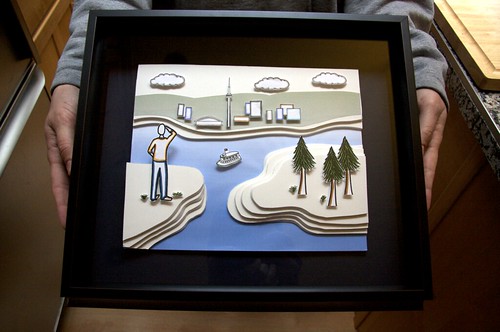WWW.CombatCorruption
For Release Sunday, May 3, 2009
© 2009 Washington Post Writers Group

Could Internet tools start to break the back of corruption in government? And could this lead to government that actually works around the world?
There's no guarantee. Endemic government corruption, whether it's bribery, extortion, nepotism or fraud, amounts to stealing of the public wealth. It has plagued virtually every nation on earth.
Almost universally, the rich are able to take care of themselves but the poor suffer when funds that should help finance housing, education, public transit, sometimes even clean water and sanitation, are siphoned off by corrupt governments.
Just in the last few weeks the run-up to the elections in India has provided a glimmer of hope for a nation of 1.5 billion long burdened by encrusted, corruption-prone government.
More than 50 percent of Indians report firsthand experience in paying bribes to get a job done in a public office, according to a Transparency International survey. But middle-class Indian youth, who previously blew off voting as a waste of time, have sprung to action. Enraged by the government's cumbersome response to last November's three-day terrorist siege of Mumbai, impatient with compromised bureaucracy, inspired by Barack Obama's election in the United States, they've taken to the Web for political organizing.
Their postings, Washington Post correspondent Emily Wax reports from Mumbai, have included blogs, YouTube channels and such Facebook pages as "Rise Up Mumbai! Rise Up India!"
Causes the youthful protesters are espousing range from anti-terrorism steps to jobs to clean water to improving crumbling schools and roads. And police, who used to harass young Indians if they massed for street demonstrations, are unable to stop youth from Web postings or text messaging in a nation where 385 million people own cell phones.
A parallel Internet-based uprising against corruption and inefficiency is building in China, where there have even been warnings within the ruling Community Party that graft could be its downfall. Internet media storms, Reuters reports, have included exposures of officials enjoying luxury overseas holidays in the name of "study" trips.
China's latest grassroots Web cause is demand for more transparency in the government's $585 billion economic stimulus plans. Don't look for a parallel to the recovery.org site the Obama administration set up to track spending under the U.S. stimulus program. But the Chinese government will be hard put to quash electronic dissent: 3,000 websites are being created daily in China, with over 300 million Internet users nationwide. In the process, official media monopolies get blown to smithereens.
Before the Web, the best hope for reducing corrupt practices worldwide had been training more skilled administrators, inculcated with values of fair service to all, not just the rich or connected.
The idea's still a good one, and could make a special difference in especially poor countries. The highest corruption, Transparency International surveys show, is found in very poor countries with weak civil service–such nations as Haiti, Afghanistan, Sudan, Zimbabwe and Uzbekistan–or Somalia, where there's essentially no government right now.
But the Web can be a powerful tool everywhere–first in making more voices heard, and second as a route to more open governance.
E-government practices, demanded by critics or inaugurated by far-sighted leaders, involve taking the functions of old, paper-based bureaucracies and putting them on accessible Web sites where it's harder for government bureaucrats to skim off a percent for themselves.
One example: digitizing India's massive railway reservations system. Buying a ticket used to be difficult unless one knew someone to bribe. Now, though, the tickets can be bought easily, at face value–online from vending machines at stations.
Or consider a U.S. example of e-government throwing light onto dubious or corrupt private market activities that can have disastrous impacts.
The Securities and Exchange Commission decided last December to open easy Web access to the regular reports it receives from all public corporations and mutual funds. Previously the reports had been technically public, but buried in hard-to-access paper ledgers. Now the companies will have to report in a single "interactive data" format developed by a worldwide consortium of businesses, associations and government agencies. With clear definitions, for example, of what's "company net profit" or "net income."
Announcing the move from "document disclosure to data disclosure," then-SEC Chairman Christopher Cox noted that "the Enron and WorldComm collapses, the subprime mortgage situation, all happened in part" because "false and highly speculative information was hidden in complex documents. False information was to easy to hide."
The bottom line's clear: from the poorest to wealthiest nations, the Web's sanitizing power to end-run bureaucracies, democratize data, shrink corruption, has to be rated one of the most powerful–and welcome–frontiers of the century.













































